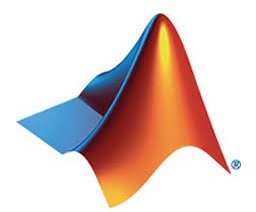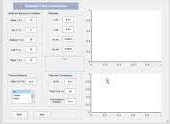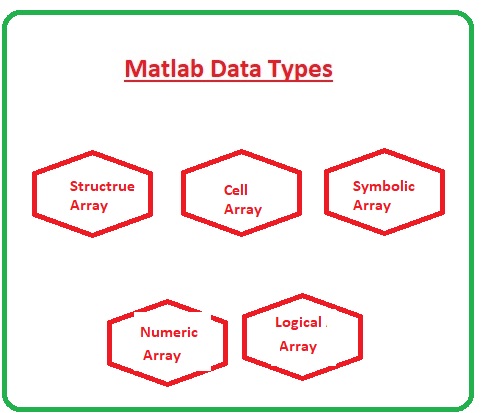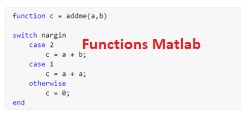 Hello, readers welcome to the new post. In this post, we will learn What is MATLAB? The MathWorks company creates the high-level programming language MATLAB.
Hello, readers welcome to the new post. In this post, we will learn What is MATLAB? The MathWorks company creates the high-level programming language MATLAB.
. It has become the default language for high-performance computing across the research and computing communities. The goal of MATLAB is to make difficult numerical calculations in disciplines like aerodynamics, fluid dynamics, climatology, and meteorology simpler and faster to write.
The Matlab Language (also called MAL, MALPerf or MALPU) was developed by Gerald W. Joseph, Walter Ren Miguel Nicolelis, , Félix Sadurní, and Edward Teller to make a language that incorporated the advantages of high-level languages and the features of matrix algebra.
Introduction to Matlab
- As a programmer, I’ve come across a few different programming languages. Having a basic knowledge of the machine’s language such as assembly and assembly language is very useful in these circumstances because I could perform a more thorough analysis of the data without a manual effort.
- However, the literature in mathematics may be exceedingly confusing.Not only are there many tools and libraries, they also carry some very fancy names that only the most advanced programmers can understand.
- Because of this, it is exceedingly challenging to fully comprehend the technical features of this program. Learning how to program effectively and efficiently is crucial for programmers interested in machine learning and computer vision.
Installation of MATLAB
- There are different ways of installing MATLAB. Below are some of them: Installing the Distribution There are different distributions of MATLAB. Everyone has its different benefits and drawbacks.
- Most of them allow you to install MATLAB from sources. This is the method we’ll use in this article. Node.js: http://nodejs.org OpenWRT
- : http://openwrt.org Debian:
- http://www.debian..org Ubuntu:
- http://www.ubuntu.com
- See the step-by-step installation in this link. After downloading and installing the distribution you need to open it.
Interface and Basic Syntax
- There are various changes between MATLAB and Microsoft Visual Studio’s syntax if you are coming from a.NET environment.
. The very significant difference is. - NET you use : instead of = in place of MATLAB and Visual Studio that. But, once you get your hands on it, you would find it really easy to code in this language as it follows familiar .
- NET syntax and looks much similar to Java. Matlab has a very user-friendly environment and the complete package of Matlab comes with a reference manual, a 32-bit and a 64-bit version, installation files and further. The only thing that you need to download is the installer file which contains the complete Matlab library and executable.
- The complete package of Matlab comes with the equivalent of the programming language.
Data Types and Variables
- Matlab’s data types can be used to represent pretty much any data that can be represented in a computer. Variables used in MATLAB are numbered and the data they are used to represent is known as an array.
- For example, your Matlab data could be represented by these elements, though it may be more commonly referred to as Mathematica for Visualization Data, Charts, Statistics Data, Geometry Data, Geometry Tools, or any other number of different titles.
- Note: Due to the variety of shapes that MATLAB’s fundamental data types may take, their names might be difficult to understand.
MATLAB describes these as brackets, parenthesis, dots, rectangles, and boxes. Variables such as 1 and 2 are used to store actual numbers. - The P and X variables can store vectors. A vector is a 3D coordinate system.
Basic Operators
- A primitive matrix is 1 by 1 and has (display) meaning: 1×1 — Other than that, this expression has meaning: (2.0*10-5)+5 The data x and y in the matrix X = (1,1) and y = (0,0) should be packed.
- This is most useful to build the picture in an array so that each pixel of the array represents a pixel of the picture (x and y). In the C programming language, multiplying two matrices is: Multiplying two matrices in MATLAB is easy and fast. In matrix multiplication, xm=X * X and ym=Y * Y. Thus, to calculate am=bm: am=a/b (this will evaluate am=a^2+b^2 ) bm=b/(a^2+b^2) (this will evaluate bm=b*b + 2*b) to calculate bm=ab: (2.0*10-5)/(2.0*10-5)^2 = (ab*b + 2*ab) = 6.25 Another example: a^2+b^2 +2*b = c^2+ab = 1.
Functions
- Stds First things first, we’re going to create a matrix with the help of matplotlib functions ( math.linalg . Basically, if you haven’t yet, download matplotlib.
- Matlab and look at the documentation. main() -> pb.run() Ended Therefore, it’s now time to run the code.
- For that, we need to change the code from above into: To run it on your local machine, simply execute it with C:\MyCode\main>./cocoa run m1.m1.m2.m3.m4.m5.m6.m7.m8 What’s Next? We’ve looked at some basic variables and what they mean.
- You can explore the rest of them on your own.
Plotting
- It Is a program which plot, resize and modify an object in an image or text file using a given specification. Is a program which plot, resize and modify object in an image or text file using a given specification. Shell Returns the output of a command, or the shell prompt. Returns the output of a command, or the shell prompt.
- Window/Screen Gives information about the current execution environment (e.g. X Window System, Microsoft XNA, Mach, HTML browser, Java VM, etc.) Gives information about the current execution environment (e.g. X Window System, Microsoft XNA, Mach, HTML browser, Java VM, etc.) Script Can be used to control or modify the simulation or generate data (written to a file), rather than merely display or manipulate an object.
Working with Files
- I have a bit of experience working with XML files. You would most likely have similar experience working with an XML server such as Apache, Microsoft, or MySQL. Writing an XSD file is as simple as or
Conclusion
You have successfully completed this course. Thank you for logging in to Jsonbin. You are now free to download the certificate. If you have any questions, please do not hesitate to contact us. To keep track of your progress, check out the Activity Log. Like this: Like Loading..






